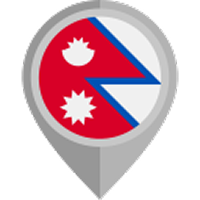Nepal vision | 07/10/2024
Kanchenjunga Circuit Trek is among the hidden gems of eastern Nepal, adorned by the world's tallest Kanchenjunga peak. The trail passes through some of the region's natural wonders, cultural gems, and diverse biodiversity.
As you walk through the rocky terrain and lush forest, you experience the remote and rugged parts of Nepal. At the same time, you pass through the cascading waterfall and serene tea garden, and the experience is one of a kind.
Besides, the trail's challenge is rewarded with the encounter of some of the endangered species living happily in the Kanchenjunga Conservation Area and majestic views of the towering peaks Kanchenjunga, Mt. Jannu, Mt. Sarphu, Nepal Peak, Ramtang Peak, Twins Peak, Mt. Gimmigela, and Chang Himal.
But many of you have asked us if trekking is allowed in the Kanchenjunga region. Despite holding the restricted area tag, the trek is open to anyone throughout the year.
Let us spill the tea regarding the Kanchenjunga Circuit Trek to help you prepare for your next adventure.
Kanchenjunga Circuit Trek Overview
The unexplored gem wrapped in the arms of the Kanchenjunga peak shares the border with the Indian state of Sikkim. Despite being the world's third-highest peak, it is isolated from other Himalayan peaks and offers a pretty different experience.
It is among the newly opened routes that opened in 1988 and is now the revered route of Nepal. The trail is a challenging and rewarding journey through pristine wilderness, diverse flora, and fauna. Further, the trail gives you the chance to encounter endangered species like snow leopards, Himalayan black bears, and Assamese macaques. In between the landscape of the towering peak, tumbling waterfalls, and the forest full of rhododendron and bamboo makes your journey worth it.
To make your journey even more interesting, the lower region Aryan community and the mid and upper region Rai, Limbu, and Sherpa show the cultural blend of the region. These friendly local people will provide you with insight into the people living happily in the remote and rugged region. Aside from that, the flying chorten, the spinning prayer wheel, and the monastery along the region also add to the cultural insight of the region.
The journey starts with a flight to Bhadrapur and then a short drive aside from the beautiful tea garden. The trek passes through picturesque foothills into iconic peaks such as Ghabur Peak, Kumbhakarna, Jannu, and the majestic Kanchenjunga itself, ending at North Base Camp (5,143 meters).
In addition, there are optional extensions, including visits to the isolated Kanchenjunga Northern Base Camp, Kanchenjunga South Base Camp, Janu Base Camp, Dormo Ri, and more for an unforgettable Himalayan experience.

How long is the trek to Kanchenjunga?
The Kanchenjunga trek starts from the lower region of Taplejung, which covers around 200 km and reaches an altitude of 5143m at Pang Pema Base Camp. To cover the altitude with proper acclimatization and explore the beautiful region, you need around 18-23 days. But the itinerary depends on different factors like your pace, your requirements, and some other conditions too. While these factors depend on your personal decision, the weather can be decided by knowing the best weather to visit the Kanchenjunga trek.
Best Time to Trek Kanchenjunga Circuit
When it comes to trekking, the best time to start is the spring and autumn. Hands down, these are the times when nature comes out in its beautiful form, and the support of the comfortable weather, encounter of endangered species, and the cheering miles of the majestic peak just make your trek journey worth it.
Spring
As the cold bids farewell, nature feels warm and cozy. Nature is adorned with green, a striking color that contrasts with the clear visibility of the surrounding peak.
The long walking hours of spring season alongside the diverse flora and endangered species of Kanchenjunga Conservation Area. At the same time, if you reach there during festivals like Buddha Jayanti or Holi, it can add extra charm to your journey.
Autumn
One of the most lively seasons in the year, with a vibrant atmosphere and comfortable weather, is autumn. After you give farewell to the heavy rainfall, the landscape gains a beautiful form that is just worth viewing. The clear views of the peaks and the good trail conditions can be even more mesmerizing.
The best part about the season is that it's the time for festivals in the lower and upper areas of Kanchenjunga, such as Dashain, Tihar, Kumje, and many more. These festivals can add extra allure to your trek.
How to make Kanchenjunga Trek Successful?
- Since the Kanchenjunga trail requires good physical fitness, start by taking a long walk up the staircase and include cardio strength training in your workout.
- Gear is your partner for trekking, such as hiking boots, warm clothes, a reliable sleeping bag, trekking poles, etc., so invest in quality ones.
- Hydration and nutrition are your fuel, so maintain a balanced diet with high-energy snacks.
- Weather in the Kanchenjunga region can be unpredictable. To stay safe, keep your itinerary flexible, stay updated with local forecasts, and be prepared for any sudden changes.
- Respect the local customs and traditions, and learn some Nepali phrases to communicate with the locals for a better experience.
To wrap up, Kanchenjunga Trek is one of the extraordinary adventures that takes you through the stunning landscape, majestic peaks, and the cultural wonder of the Kanchenjunga region. The diverse ecosystem that inhibits the flora and fauna is one of the major highlights. But the trek comes with challenges that provide beautiful rewards. It would help if you had an excellent physical fitness level to tackle the rugged terrain and high altitude.
Despite these challenges, the Kanchenjunga trek is a life adventure. If you are interested in embarking on the journey, feel free to contact Nepal Vision Trek for expert guidance.
FAQ









